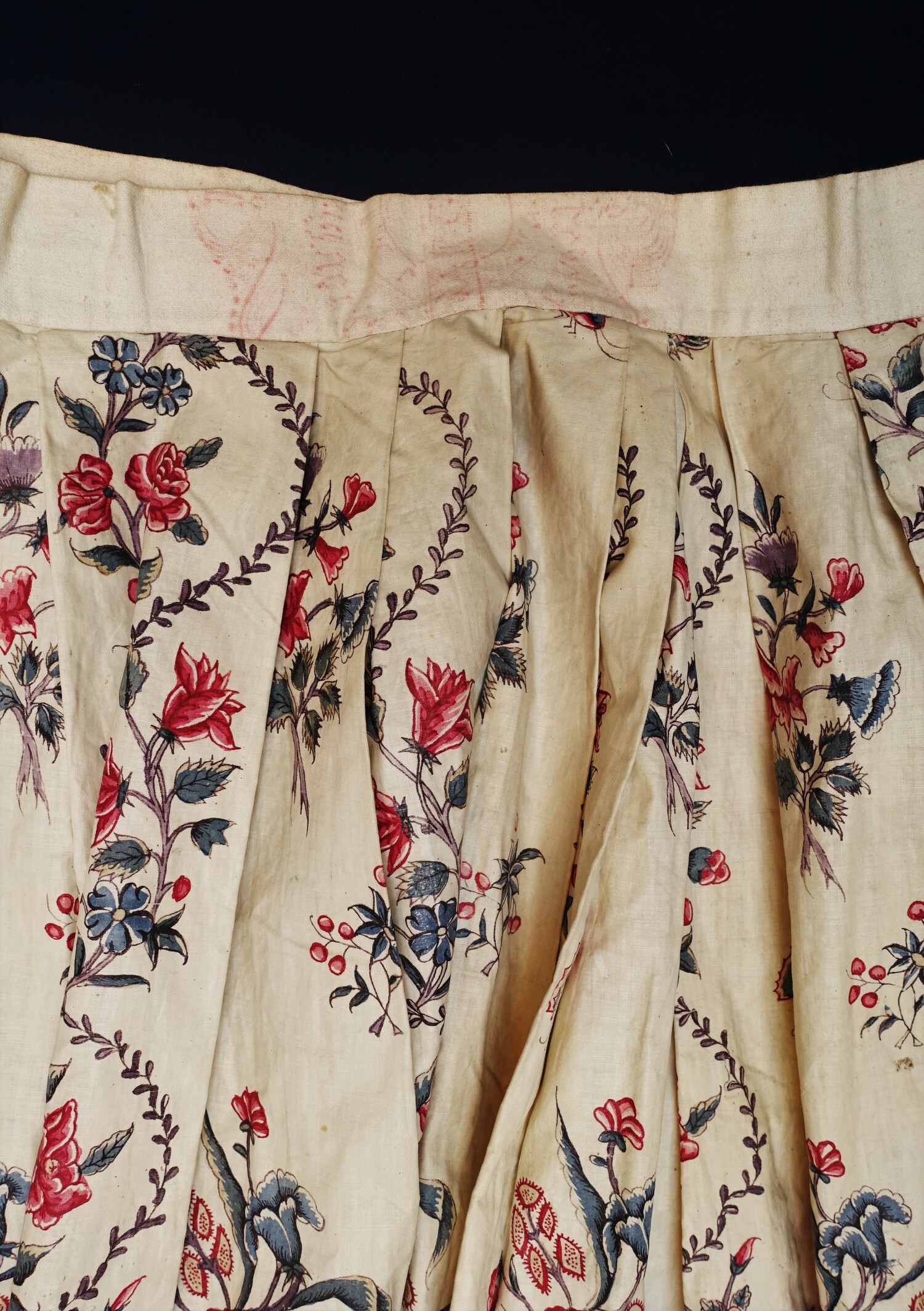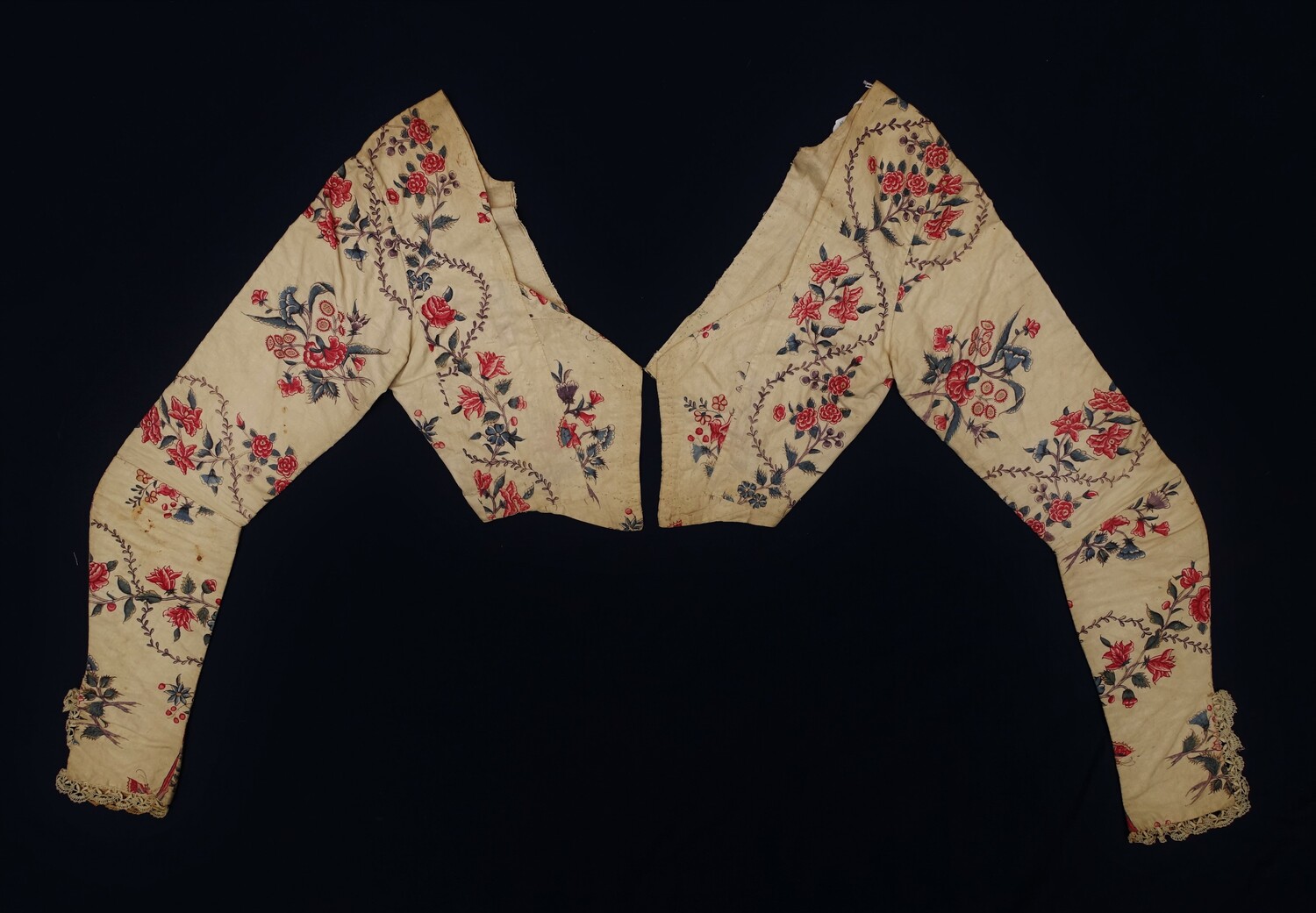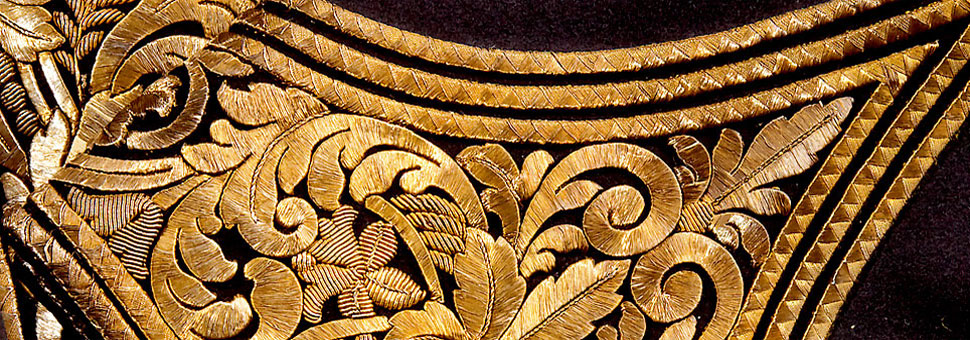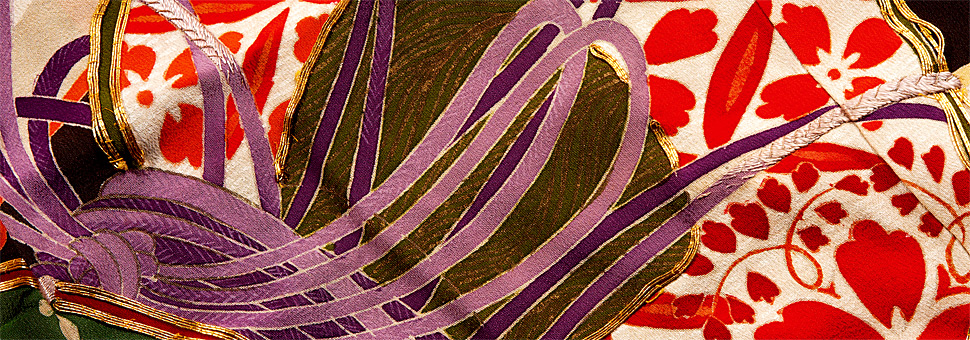The TRC is starting a series of blogs with the title Collection Highlights. For this week, we are featuring a late 18th-century chintz ensemble (TRC 2007.0731a and TRC 2007.0731b). The outfit in is two parts; a bodice and a skirt. The fabric is made out of a white cloth with a block-printed and hand-painted design of flowers, leaves and butterflies in red, blue and brown.

The fabric is referred to as chintz; a woodblock-printed and sometimes hand-painted cotton cloth with bright floral motifs on a lighter ground. This style of textile was extremely popular in the Western world in the 17th and 18th century. It originated in India in the 16th century. It, and variations on the same style that were manufactured in Europe, could be found for clothing, bedding textiles and all types of interior design objects.

There are many clues to the modifications. First, the bodice shape seems to have been modified and shortened, and the neckline deepened into a V-shape. A typical 18th-century bodice would have been much longer on the front (the stomach piece draping over the stomach and arching over the hips) and the neckline would probably have been rounded or straight.
The skirt also seems to have been taken in and the pleats that would normally accommodate a panier to make them puff up on either side, now fall much more closely to the body. Additionally, the pockets that the dress originally featured (yes, women’s dresses often did feature practical pockets) were sewn shut and tucked into some of the many pleats. A linen waistband also seems to be a later addition and the same fabric was used to line the bodice.
The chintz ensemble and its modifications lead to some thoughts about costumes and how to “dress up” fashionably to represent a certain period of history. First, whereas we usually recreate an historical costume out of modern fabric, this one was adapted from an original of that specific time period. What could have been more “accurate” than an original?

Then, in order to dress up, people often make some choices between accuracy and their own personal taste, or adapt a garment to their own personal size. We see many examples of this in film productions where a “period” drama would loosely adhere to historical silhouettes, but hair, makeup or fabric might be more reflective of the time the film is made.

Augusta de Gunzbourg, 10 May 2025










